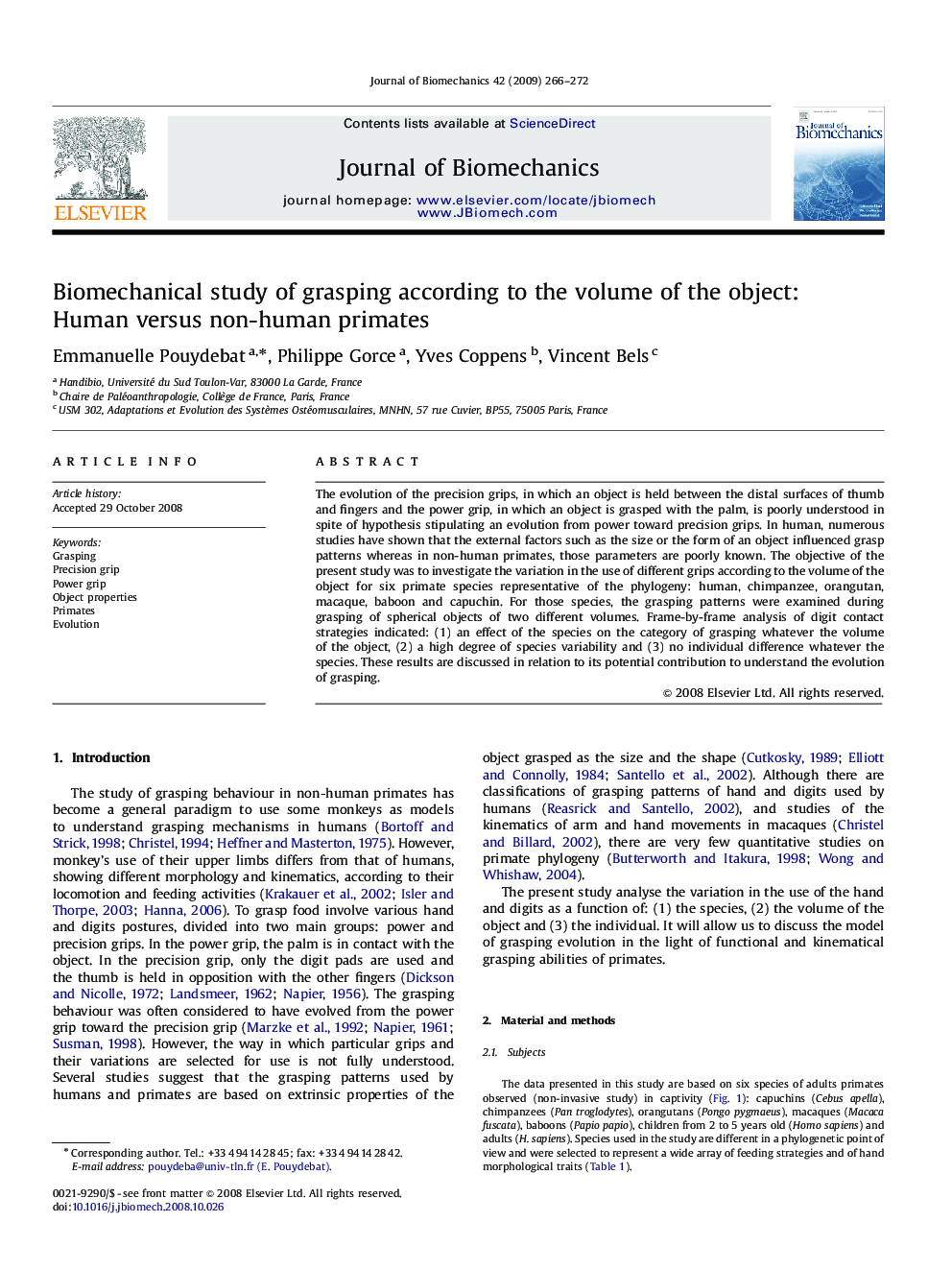| Article ID | Journal | Published Year | Pages | File Type |
|---|---|---|---|---|
| 874569 | Journal of Biomechanics | 2009 | 7 Pages |
The evolution of the precision grips, in which an object is held between the distal surfaces of thumb and fingers and the power grip, in which an object is grasped with the palm, is poorly understood in spite of hypothesis stipulating an evolution from power toward precision grips. In human, numerous studies have shown that the external factors such as the size or the form of an object influenced grasp patterns whereas in non-human primates, those parameters are poorly known. The objective of the present study was to investigate the variation in the use of different grips according to the volume of the object for six primate species representative of the phylogeny: human, chimpanzee, orangutan, macaque, baboon and capuchin. For those species, the grasping patterns were examined during grasping of spherical objects of two different volumes. Frame-by-frame analysis of digit contact strategies indicated: (1) an effect of the species on the category of grasping whatever the volume of the object, (2) a high degree of species variability and (3) no individual difference whatever the species. These results are discussed in relation to its potential contribution to understand the evolution of grasping.
